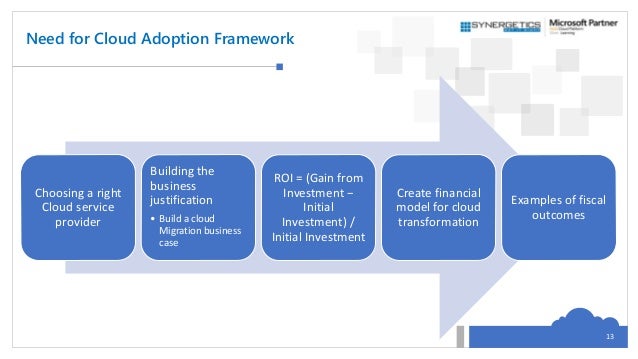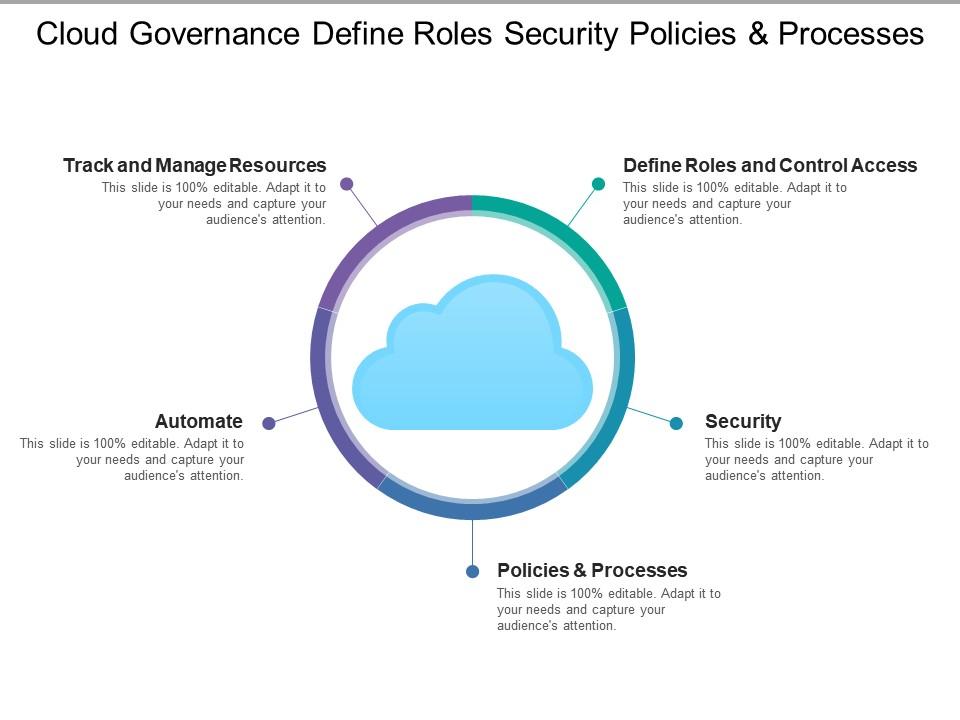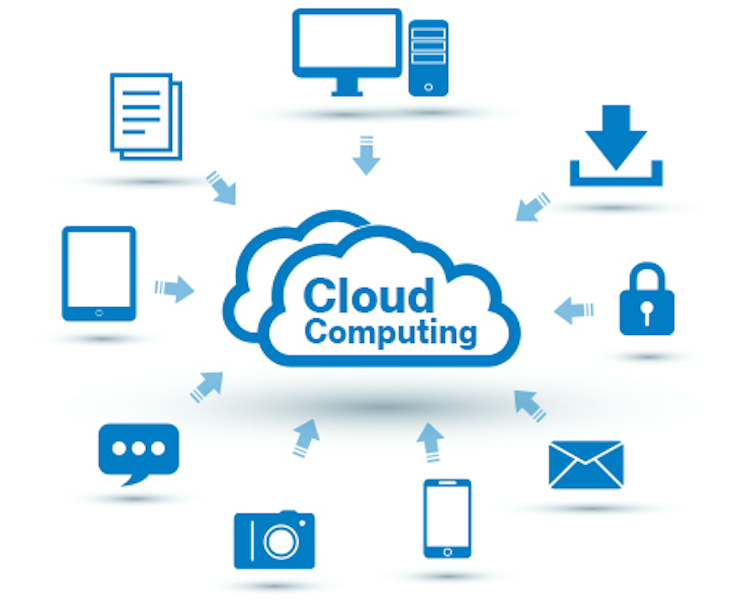The Evolution of Cloud Technologies and Associated Risks
The rapid growth of cloud technologies has revolutionized the way businesses operate, offering numerous benefits such as cost savings, scalability, and flexibility. However, this shift has also introduced new governance and compliance challenges for organizations. As companies increasingly rely on cloud services to store and process sensitive data, they become more vulnerable to potential risks and threats. These risks include data breaches, unauthorized access, and non-compliance penalties, which can lead to financial losses, damaged reputations, and legal consequences.
Data breaches are one of the most significant risks associated with cloud technologies. These breaches can result in the unauthorized exposure or theft of sensitive information, causing significant harm to both businesses and their customers. Unauthorized access is another concern, as weak access controls can allow unauthorized users to gain access to sensitive data or systems, leading to data manipulation or other malicious activities. Non-compliance penalties can also have severe consequences, as businesses may face fines or sanctions for failing to adhere to various regulations, such as the General Data Protection Regulation (GDPR) or the Health Insurance Portability and Accountability Act (HIPAA).

The Importance of Effective Governance and Compliance in the Cloud Era
In today’s digital age, businesses increasingly rely on cloud technologies to store and process sensitive data. As a result, implementing robust governance and compliance strategies has become more critical than ever. Effective governance and compliance in the cloud era offer numerous benefits, including increased security, improved regulatory compliance, and enhanced business reputation.
Cloud governance refers to the set of policies, procedures, and controls that organizations implement to manage and monitor their cloud resources. By establishing clear governance policies, businesses can ensure that their cloud resources are used efficiently, securely, and in compliance with relevant regulations. This, in turn, can help organizations avoid potential risks and threats, such as data breaches, unauthorized access, and non-compliance penalties.
Regulatory compliance is another critical aspect of cloud governance and compliance. With the increasing number of regulations governing data privacy and security, businesses must ensure that they comply with these regulations to avoid potential fines and reputational damage. Effective governance and compliance strategies can help organizations meet these regulatory requirements by establishing clear policies and procedures for data management, access control, and incident response.
Moreover, implementing robust governance and compliance strategies can enhance a business’s reputation. By demonstrating their commitment to security and regulatory compliance, businesses can build trust with their customers, partners, and stakeholders. This can lead to increased customer loyalty, improved business relationships, and a stronger brand image.
In conclusion, effective governance and compliance are essential for businesses operating in the cloud era. By establishing clear policies and procedures, implementing strong access control and identity management, continuously monitoring and reporting, and adapting to changing regulations and technologies, businesses can ensure that their cloud resources are used securely, efficiently, and in compliance with relevant regulations. This, in turn, can help organizations avoid potential risks and threats, meet regulatory requirements, and enhance their business reputation.

Defining Policies and Procedures for Governance and Compliance in the Cloud Era
In the cloud era, businesses face new governance and compliance challenges due to the rapid growth of cloud technologies. Establishing clear policies and procedures for cloud usage is essential to address these challenges. This section will discuss the significance of defining policies and procedures, best practices, and real-world scenarios.
Policies and procedures serve as the foundation for effective governance and compliance in the cloud era. They provide guidelines for managing and using cloud resources, ensuring that they are used efficiently, securely, and in compliance with relevant regulations. By defining policies and procedures, businesses can establish clear expectations for their employees and cloud service providers, reducing the risk of potential data breaches, unauthorized access, and non-compliance penalties.
Best practices for defining policies and procedures include:
- Collaborating with stakeholders: Involve all relevant stakeholders, including IT, legal, and business teams, to ensure that policies and procedures align with business objectives and regulatory requirements.
- Documenting policies and procedures: Clearly document policies and procedures, making them easily accessible to employees and cloud service providers.
- Regularly reviewing and updating policies and procedures: Regularly review and update policies and procedures to ensure that they remain relevant and effective.
- Providing training and awareness: Provide training and awareness programs to ensure that employees understand the policies and procedures and their role in ensuring cloud security and compliance.
Real-world scenarios illustrate the importance of defining policies and procedures. For example, a healthcare organization must comply with the Health Insurance Portability and Accountability Act (HIPAA) regulations governing the privacy and security of patient data. By defining clear policies and procedures for cloud usage, the organization can ensure that its cloud service providers comply with HIPAA regulations, reducing the risk of data breaches and non-compliance penalties.
In conclusion, defining clear policies and procedures is essential for effective governance and compliance in the cloud era. By collaborating with stakeholders, documenting policies and procedures, regularly reviewing and updating them, and providing training and awareness, businesses can ensure that their cloud resources are used efficiently, securely, and in compliance with relevant regulations. This, in turn, can help organizations avoid potential risks and threats, meet regulatory requirements, and enhance their business reputation.

Implementing Strong Access Control and Identity Management for Governance and Compliance in the Cloud Era
Access control and identity management are critical components of ensuring cloud security and compliance in the cloud era. By implementing robust access control and identity management methods, businesses can reduce the risk of data breaches, unauthorized access, and non-compliance penalties. This section will discuss various access control and identity management methods and their benefits.
Access control and identity management involve verifying the identity of users and granting or denying access to cloud resources based on their identity, role, and permissions. Various access control and identity management methods can be employed, including:
- Single Sign-On (SSO): SSO allows users to access multiple cloud applications and services with a single set of credentials. This method simplifies access management and reduces the risk of password-related security threats.
- Multi-Factor Authentication (MFA): MFA requires users to provide multiple forms of authentication, such as a password, security token, or biometric factor, before accessing cloud resources. This method provides an additional layer of security and reduces the risk of unauthorized access.
- Role-Based Access Control (RBAC): RBAC grants access to cloud resources based on a user’s role within the organization. This method simplifies access management and reduces the risk of over-provisioning access.
By implementing strong access control and identity management methods, businesses can ensure that only authorized users have access to cloud resources, reducing the risk of data breaches and unauthorized access. Additionally, access control and identity management can help businesses meet regulatory compliance requirements, such as HIPAA, PCI-DSS, and GDPR, by providing a clear audit trail of user activity and access.
Real-world scenarios illustrate the importance of access control and identity management. For example, a financial institution must comply with the Payment Card Industry Data Security Standard (PCI-DSS) regulations governing the security of credit card data. By implementing strong access control and identity management methods, the institution can ensure that only authorized users have access to credit card data, reducing the risk of data breaches and non-compliance penalties.
In conclusion, implementing strong access control and identity management methods is essential for effective governance and compliance in the cloud era. By implementing SSO, MFA, RBAC, and other access control and identity management methods, businesses can ensure that only authorized users have access to cloud resources, reducing the risk of data breaches and unauthorized access. This, in turn, can help organizations meet regulatory compliance requirements and enhance their business reputation.
Assessing Current Cloud Infrastructure and Applications for Governance and Compliance in the Cloud Era
Evaluating existing cloud infrastructure and applications is a critical step in identifying potential governance and compliance gaps. By performing a thorough assessment, businesses can ensure that their cloud environment meets regulatory requirements and security best practices. This section will provide a step-by-step guide on how to perform a thorough assessment.
The following steps can help businesses assess their current cloud infrastructure and applications:
- Identify cloud assets: The first step in assessing cloud infrastructure and applications is to identify all cloud assets, including virtual machines, databases, storage, and network configurations. This can be done by reviewing cloud service provider reports, inventory management tools, and other relevant documentation.
- Review security controls: Once all cloud assets have been identified, businesses should review the security controls in place, including access controls, encryption, and firewall configurations. This review should ensure that security controls align with regulatory requirements and industry best practices.
- Assess data management practices: Data management practices, such as data classification, backup, and recovery, should be assessed to ensure that they meet regulatory requirements and security best practices. This assessment should also identify any potential data breach risks and ensure that data is being stored and processed in compliance with relevant regulations.
- Evaluate incident response procedures: Incident response procedures should be evaluated to ensure that they are effective and align with regulatory requirements. This evaluation should include testing incident response plans, identifying response team members, and ensuring that incident response procedures are regularly reviewed and updated.
- Review compliance reports: Compliance reports, such as Security and Compliance reports from cloud service providers, should be reviewed to ensure that the cloud environment meets regulatory requirements. These reports can provide valuable insights into potential compliance gaps and areas for improvement.
By following these steps, businesses can perform a thorough assessment of their current cloud infrastructure and applications. This assessment can help identify potential governance and compliance gaps and provide a roadmap for addressing these gaps. Additionally, regular assessments can help businesses maintain a secure and compliant cloud environment, reducing the risk of data breaches and non-compliance penalties.
Real-world scenarios illustrate the importance of assessing current cloud infrastructure and applications. For example, a healthcare organization must comply with the Health Insurance Portability and Accountability Act (HIPAA) regulations governing the security of patient data. By performing regular assessments of their cloud infrastructure and applications, the organization can ensure that they are meeting HIPAA requirements and reducing the risk of data breaches and non-compliance penalties.
In conclusion, assessing current cloud infrastructure and applications is essential for effective governance and compliance in the cloud era. By following a step-by-step guide, businesses can perform a thorough assessment of their cloud environment, identify potential governance and compliance gaps, and maintain a secure and compliant cloud environment. This, in turn, can help organizations meet regulatory compliance requirements and enhance their business reputation.

Selecting the Right Tools and Solutions
In the cloud era, businesses have access to a wide range of tools and solutions to manage cloud governance and compliance. Selecting the right tools and solutions is crucial to ensure a secure and compliant cloud environment. This section will discuss two popular tools, Cloud Security Posture Management (CSPM) and Cloud Access Security Broker (CASB) platforms, and their features, benefits, and limitations.
Cloud Security Posture Management (CSPM)
Cloud Security Posture Management (CSPM) platforms help businesses identify and remediate security risks in their cloud infrastructure. These platforms continuously monitor cloud environments for misconfigurations, vulnerabilities, and non-compliant behaviors. By automating security checks, CSPM platforms can help businesses maintain a secure cloud environment and meet regulatory compliance requirements.
Some of the key features of CSPM platforms include:
- Continuous monitoring of cloud infrastructure for misconfigurations and vulnerabilities
- Automated security checks and alerts for non-compliant behaviors
- Integration with cloud service providers and other security tools
- Compliance reporting and remediation recommendations
However, CSPM platforms have some limitations, such as:
- Limited visibility into user activity and data access
- Limited support for custom security policies
- Limited integration with on-premises security tools
Cloud Access Security Broker (CASB)
Cloud Access Security Broker (CASB) platforms provide businesses with visibility and control over cloud application usage. These platforms monitor user activity, enforce security policies, and detect and prevent threats in cloud applications. By providing a layer of security between users and cloud applications, CASB platforms can help businesses ensure regulatory compliance and reduce the risk of data breaches.
Some of the key features of CASB platforms include:
- Visibility into cloud application usage and user activity
- Enforcement of security policies for cloud application usage
- Threat detection and prevention in cloud applications
- Integration with cloud service providers and other security tools
However, CASB platforms have some limitations, such as:
- Limited support for custom security policies
- Limited integration with on-premises security tools
- Limited support for non-web-based cloud applications
In conclusion, selecting the right tools and solutions is essential for effective cloud governance and compliance. CSPM and CASB platforms are two popular tools that can help businesses maintain a secure and compliant cloud environment. By understanding their features, benefits, and limitations, businesses can make informed decisions about which tools and solutions to adopt. Additionally, businesses should consider their specific security and compliance requirements and evaluate the available tools and solutions accordingly.

Maintaining and Improving Cloud Governance and Compliance
Continuous Monitoring and Reporting
In the rapidly evolving cloud landscape, continuous monitoring and reporting are essential components of a robust governance and compliance strategy. By continuously monitoring cloud infrastructure and applications, businesses can detect and respond to security incidents and compliance violations in real-time. This section will discuss various monitoring techniques and their role in maintaining a secure and compliant cloud environment.
Log Analysis
Log analysis is the process of examining and interpreting log data generated by cloud infrastructure and applications. Log data can provide valuable insights into user activity, system behavior, and security incidents. By analyzing log data, businesses can detect anomalies, identify security threats, and investigate incidents. Log analysis tools can automate the process of log data analysis and provide real-time alerts for security incidents.
Anomaly Detection
Anomaly detection is the process of identifying unusual or abnormal behavior in cloud infrastructure and applications. Anomalies can indicate security threats, such as unauthorized access, data breaches, or malware infections. Anomaly detection tools can use machine learning algorithms to learn the normal behavior of cloud infrastructure and applications and detect deviations from the norm. By detecting anomalies in real-time, businesses can respond quickly to security incidents and mitigate their impact.
Threat Intelligence
Threat intelligence is the process of collecting and analyzing information about security threats and vulnerabilities. Threat intelligence can provide businesses with insights into the latest security threats, such as malware, phishing, and ransomware attacks. By using threat intelligence, businesses can proactively identify and mitigate security threats before they impact their cloud infrastructure. Threat intelligence tools can provide real-time alerts for security incidents and provide recommendations for remediation.
Monitoring Techniques: Best Practices
To ensure effective monitoring and reporting, businesses should follow best practices, such as:
- Defining clear monitoring objectives and metrics
- Implementing a centralized logging and monitoring system
- Configuring alerts and notifications for security incidents
- Regularly reviewing and analyzing monitoring data
- Testing and validating monitoring tools and processes
In the cloud era, continuous monitoring and reporting are critical components of a successful governance and compliance strategy. By using monitoring techniques, such as log analysis, anomaly detection, and threat intelligence, businesses can maintain a secure and compliant cloud environment. By following best practices, businesses can ensure the effectiveness of their monitoring and reporting processes and respond quickly to security incidents.

Adapting to Changing Regulations and Technologies in the Cloud Era
In the rapidly evolving cloud landscape, businesses must stay up-to-date with changing regulations and technologies to maintain effective governance and compliance. Adapting to these changes requires a proactive approach, involving ongoing education, evaluation, and adjustment of governance and compliance strategies. This section will discuss the importance of adapting to changing regulations and technologies and provide recommendations for businesses to stay ahead of the curve.
Staying Up-to-Date with Regulatory Changes
Regulations governing cloud computing and data protection are constantly changing, with new laws and standards emerging in response to emerging threats and technologies. For example, the European Union’s General Data Protection Regulation (GDPR) and the California Consumer Privacy Act (CCPA) have introduced new requirements for data protection and privacy. Businesses must stay informed about these regulatory changes and adjust their governance and compliance strategies accordingly. This can involve:
- Regularly reviewing regulatory updates and guidance
- Assessing the impact of regulatory changes on cloud infrastructure and applications
- Updating policies and procedures to reflect regulatory requirements
- Providing training and awareness programs for employees
Evaluating New Technologies and Solutions
New technologies and solutions are constantly emerging in the cloud landscape, offering opportunities for businesses to improve their security, compliance, and operational efficiency. For example, cloud-native security tools, such as Cloud Security Posture Management (CSPM) and Cloud Access Security Broker (CASB) platforms, can help businesses automate and streamline their governance and compliance processes. However, evaluating new technologies and solutions requires careful consideration, including:
- Assessing the benefits and limitations of new technologies and solutions
- Evaluating their impact on existing cloud infrastructure and applications
- Considering their cost, scalability, and compatibility with existing systems
- Testing and validating their effectiveness and reliability
Adopting a Proactive Approach to Change Management
Adapting to changing regulations and technologies requires a proactive approach to change management, involving ongoing evaluation, planning, and implementation. This can involve:
- Establishing a change management framework and process
- Assigning roles and responsibilities for change management
- Defining criteria for evaluating and selecting new technologies and solutions
- Testing and validating changes in a controlled environment
- Communicating changes to stakeholders and users
- Monitoring and reporting on the impact of changes
In the cloud era, adapting to changing regulations and technologies is essential for maintaining effective governance and compliance. By staying informed about regulatory changes, evaluating new technologies and solutions, and adopting a proactive approach to change management, businesses can ensure their cloud infrastructure and applications remain secure, compliant, and efficient.

